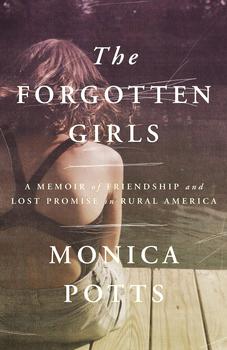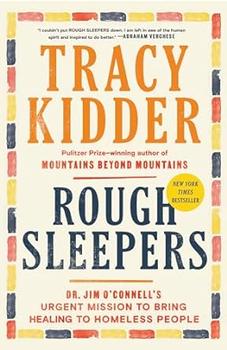Summary | Excerpt | Reviews | Beyond the book | Read-Alikes | Genres & Themes | Author Bio

Dealers, Doctors, and the Drug Company that Addicted America
by Beth MacyBefore Tess Henry was a heroin addict, she was a teenage girl who wrote poetry and loved the author David Sedaris. She played basketball and ran track. The daughter of a surgeon and a nurse, Tess studied French at Virginia Tech. She was one of the advantaged. Tess started with the narcotic Lortab, then graduated to Dilaudid, Roxicodone, and Opana. But it was her heroin descent that introduced her to the corrupt dealers, the predatory practices, the cruel punishment and the violent outcomes for addicts – the opioid culture.
When opioid abuse was a rural problem in forgettable places, Beth Macy began writing about it for the Roanoke Times. Six years later, opioid abuse is a national epidemic of 2.6 million addicts. Fluent in the crisis, Macy tells a layered tale of the history of morphine, children and their grieving families, and heroin highways. Absent ethnocentric and class judgements, Dopesick delivers a tragic story.
If nothing else, the numbers humanize the collapse. A stunning 300,000 have died in the past 15 years because of opioid abuse and 300,000 are projected to die in the next 5 years, more than gunshot wound deaths and even more than AIDS deaths in its most epic years. Opioid addiction is erasing those younger than 40. To put the devastation into context, Macy quotes a dealer who tells her that after an overdose, he has more customers, not less; a terrifying reality of opioids' appeal. It's not the drug that is erotic, but it is the high – and the high is what is drowning more than two million in a lethal culture.
There is no greater example of gods and monsters than opioids. Opioids, which act on receptors mainly in the nervous system to produce morphine-like effects, have been a great source of comfort for cancer patients, injured soldiers and everyone in between but simultaneously – and this is the devastation – opioids have destroyed the addicted like Tess Henry. Thousands have died because legal opioids have made heroin and fentanyl the pretty girl at the prom, a must have. "No one saw the train wreck coming – not the epidemiologists, not the criminologists, not even the scholars," Macy writes, as she explains the beginning of the crisis.
When it was launched in the mid-1990s, the legal opioid OxyContin was a time release drug that had a 12-hour potency and, according to the literature, was addictive less than 1% of the time. Unlike previous opioid pain relievers, Oxy wasn't just marketed for extreme pain but for moderate relief as well. Toothache, arthritis, muscle soreness, back pain--oftentimes doctors left it up to patients to decide how much they needed to take.
It didn't take long for addiction to surface. If you sucked the transparent coating off, what was left was a substance that could be crushed and snorted, or injected with a needle -80 milligrams of Oxy directly into the blood system. The high is glorious until it ends. Then the hunt for a repeat high begins. The fear of dopesickness begins too: hot and cold flashes, vomiting blood, spasms, dry mouth, migraines, not being able sleep or eat, sweating, agitation, paranoia and depression. There are no compromises, just horrors. To prevent dopesickness the drug has to never run out, even if that means selling your grandmother's wedding ring to pay for it or, as Macy describes, crawling through a ceiling vent to break into a pharmacy.
The mothers of the opioid dead are not hesitant to voice their outrage. They are sad, angry, resolute and filled with questions. Kristi Fernandez wants to know why her son Jesse died; she already knows the how, a narcotics overdose in the bathroom. She would later discover Jesse participated in pharm parties where opioids were traded. "I hurt as much today as the day my son died", she says. After Randy Nuss died, his grieving mother Lee placed a large magnet on her car, on the advice of her grief counselor, meant to serve as a warning to anyone who saw her car. Randy's photo accompanies the words: In love and memory of Randall Nuss and Others. Scott Roth, who loved to cook and rap, is dead because he bought heroin from a former classmate. His mother Robin says, "I wish I would have built him a stronger support system. I thought I could do it all as a single mom."
There are so many others.
Macy is able to paint a full picture here. She reveals how there are saints and villains in this venomous opiate war, people who inspire and people who are dangerous facilitators, but mostly she shines a spotlight on the fact that this is a policy and rehab failure. On average, it takes eight years and four or five attempts for an addict to become fully clean - if they become clean at all.
So how to cure addicts?
Macy argues on behalf of Medically Assisted Treatment (MAT). "If my own child were turning tricks on the streets, enslaved not only by the drug but also criminal dealers and pimps, I would want her to have the benefit of maintenance drugs, even if she sometimes misused them." She is dismissive of President Trump's non-policy policy that creates collateral damage for the chronically ill who are not given enough opioids to treat pain because addicts have hijacked opioids for themselves. Patients who truly need opioids to manage their disease have their treatment plans restricted because everyone is suspicious of everyone. Politicians who are dug in against the Affordable Care Act make the crisis even worse.
After reading Macy's chilling account, you can't help but wonder if we have reached the point of ordinary: the addicted dying before they reach the age of 40 while people run away – or look away or pretend they don't see. You can't help but wonder if they is actually we. It's not our fault a drug hit the market and was overprescribed, and the Center for Disease Control was apathetic. But it is our fault when we neglect the addicted.
![]() This review was originally published in The BookBrowse Review in August 2018, and has been updated for the
September 2019 edition.
Click here to go to this issue.
This review was originally published in The BookBrowse Review in August 2018, and has been updated for the
September 2019 edition.
Click here to go to this issue.

If you liked Dopesick, try these:

by Monica Potts
Published 2024
Talented and ambitious, Monica Potts and her best friend, Darci, were both determined to make something of themselves. How did their lives turn out so different?

by Tracy Kidder
Published 2024
The powerful story of an inspiring doctor who made a difference, by helping to create a program to care for Boston's homeless community—by the Pulitzer Prize–winning, New York Times bestselling author of Mountains Beyond Mountains
Outside of a dog, a book is man's best friend. Inside of a dog it's too dark to read.
Click Here to find out who said this, as well as discovering other famous literary quotes!
Your guide toexceptional books
BookBrowse seeks out and recommends the best in contemporary fiction and nonfiction—books that not only engage and entertain but also deepen our understanding of ourselves and the world around us.